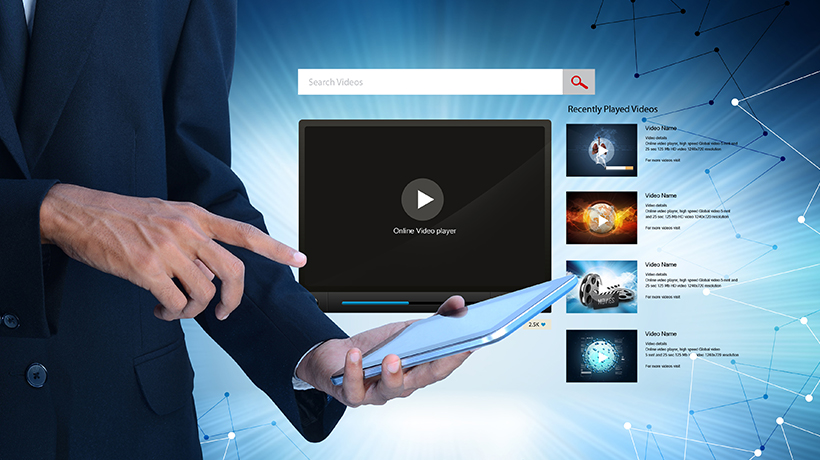
As 2023 emerges, designing the annual learning and development strategy is a key task and it needs involvement from CXO-level leaders in order to meet business goals. Identifying the plan’s focus areas will make the job easier and help measure its results better by the end of 12 months.
What Are the Key Focus Areas for 2023?
Defining the focus areas for 2023 can help organizations determine which training and development programs are aligned with the business goals and update/modify the ones that aren’t.
EI in Learning and Adopting Human-centered Learning Approaches
First, it’s critical to understand the learners’ needs and incorporate them into the learning programs. This will upgrade the learning experience for them and provide a better outcome for all.
To start with, creating a common space where both employees and the L&D staff will share insight. This may mean developing a Learning Lab that is a solution for personalized digital support, designed to empower learners.
Under this prism, things to consider to adopt human-centered learning approaches can be:
- Understanding what motivates your learners and what hinders them from learning to improve your training services quality. Enhancing their engagement in the designing of learning material is crucial, so it should be promoted substantially to bring down existing barriers.
- Providing your employees with opportunities to collaborate more closely with managers and peers to cultivate a more supportive atmosphere and make the learning experience more human.
- Finding the right balance between learning science, learner-centered design, and experiential learning technology to achieve better deliverables and increase their effectiveness. Toward this “recipe,” one can use video based and scenario based learning and social learning via mild coaching.
- Creating and incubating personalized learning ecosystems that align with the learning needs of different learning cohorts so that services of added value are offered.
More Mature Hybrid Training Solutions (Onboarding, Sales, Compliance)
As the world is constantly changing and posing challenges for the workforce, more mature hybrid training solutions should be developed to keep up with the trends. Therefore, the business should focus on offering the following:
- Employees should become proactive learners and the business needs to support Self-directed Learning (SDL); training programs need to be more accessible.
- The employees should feel more supported by the hierarchy in adjusting to a hybrid working environment. This means training them to follow digital transformation in the workplace related to upskilling and reskilling. Specifically, it’s important that the employees adapt to new digital processes and tools as well as current workplace trends such as diversity and inclusion training.
- Learning in the flow of word (LIFOW) experiences are a priority via methods like in-app experiences that provide targeted and compact knowledge in the devices the staff uses at work. In that way, the training time and the whole training or onboarding procedure are decreased since useful knowledge tips are provided directly to the workforce and newcomers in the form of, for example, interactive walkthroughs, knowledge bases with Q&A, tooltips, and important messages.
- There should also be room for experimentation with newer content formats and training delivery methods. Creating repurposed and more attractive learning content by using existing materials can save L&D leaders much time and energy. The same goes for implementing alternative training delivery methods like learning in the moment of need, microlearning, or creating a knowledge-sharing ecosystem. Learning in the moment of need allows employees to experience a real-time challenge and learn how to address it. Microlearning, on the other hand, offers brief learning “shots” to the staff, is direct, and is goal-oriented so they can be easily memorized. A knowledge-shared ecosystem is an intranet encyclopedia with useful how-tos related to internal processes, essential for guidance and answers to questions.
Provide Employees the Time and Space for Learning
- Having enough time and space are the two essential prerequisites to helping employees process new knowledge and put it into practice. Incentives to join “in-house” training sessions or outside-the-company classes must be revised and enhanced. These incentives could be monetary, days off, or other rewards.
- Apart from that, the learning and development strategy for this year should concentrate more on taking up policies and initiatives that assist the staff to put learning into practice on the one hand, while providing them with safe practice zones on the other. This will create a win-win scenario.
Build a Strong Learning Culture
- Another focus area has to do with maintaining a strong learning culture that consequently strengthens the business culture. This is becoming more vital now that remote work is multiplying and employees seem to not be so bothered to cultivate relationships with their co-workers. Research shows that organizations that focus on connecting employees to their culture and succeed raise their employee performance to 37% and can also achieve increased retention by up to 36%.
- The role of L&D leaders to foster a connection between the workforce and a strong learning culture characterized by continually advancing their staff’s skills, revealing their talents, and enhancing their leadership can have a beneficial impact on strengthening their connection to the company’s culture as well.
L&D will Play a Key Role in Employee Retention and Engagement
- Reducing the high cost of recruitment and replacement should also be added to the annual L&D strategy. The company should keep its employees satisfied and feeling valued while offering them the chance to evolve and try their capabilities in other positions within the business (via rotating), instead of searching for new candidates that need time to adjust.
- This year’s goal should be to promote internal mobility, take proactive steps regarding upskilling and reskilling the workforce to ensure that it stays ahead of future challenges, and reduce talent attrition by making a difference in attracting new/top talent. Another focus area should be building employee engagement platforms where people can discuss work-related issues and provide assistance and feedback to their co-workers. Having such platforms will make employees feel valued, and, as a result, their motivation and performance will improve.
L&D Must Factor in Employee Well-being and Mental Health
- Another important focus area is to promote the well-being and mental health of your employees. What is the point of having skilled staff if your staff doesn’t enjoy working in your business either due to discrimination, injustice, or simply by not feeling like they are an actual part of the company?
- Focusing therefore on promoting Diversity, Equity, Inclusion, and the engagement of employees in creating initiatives of any nature to build stronger bonds, enhancing the feeling of belonging, and making it easier for them to receive learning services is of top priority. And real-time employee feedback can contribute to that immensely as well as create an open-source change strategy to combat uncertainty by involving the workforce in the change process instead of just announcing to them what is going to happen.
Focus on Measuring the Impact of Learning and Development Strategies on Both the Business and the Employees
- Designing a learning and development strategy has nothing to offer if you don’t measure its impact on both the employees and your business. So, this year make your strategy measurable.
- Integrate behavioral data into your L&D annual plan and link training services to learner performance, business results, and talent retention. ROI and ROE indexes must also be included. Otherwise, how would you know what corrections and adjustments you can make next year?
Build a Robust Learning Technology Stack to Drive Learning
Another important thing to consider is to adopt a people-first, technology-second approach while building your learning stack. Taking that into account, learning technology must empower and enable employees to learn better and participate in the creation of learning materials with valuable input. Here are some ideas to make this happen:
- Tech to build immersive and experiential learning.
- Tech to drive collaborative learning (by boosting practice zones).
- Tech to provide LIFOW, create learning opportunities, and make information accessible at the moment of need (via shared knowledge bases).
- Business Simulations (through in-situ learning).
- Tech to personalize learning.
- Tech to collect user performance data.
- Rapid mobile-first training delivery.
- An integrated learning management system is therefore needed.
Training Needs You Should Factor for or Relook
- Last but not least, your annual learning and development strategy should focus on re-examining your training needs about the following subjects that gather the most attention currently worldwide:
- Business Sustainability and ESG
- DEI&B (due to the rise of global talent hubs)
- Soft skills training
- Compliance training
- Induction and onboarding (due to the rise of global talent hubs)
Parting Thoughts
This article underlined the focus areas for preparing a cohesive learning and development strategy for this year. Therefore, to make it successful, take heed of the pre-mentioned areas to increase its effectiveness while ensuring that measurable results will be extracted to estimate its impact and the potential added value its implementation can offer. Furthermore, by accurately and timely measuring initiatives, organizations would be able to make appropriate updates to their strategies and apply changes that can lead to the desired results.
Read More
- eBook: 2023 Learning Trends for The Connected Workplace
- How to Get Your Employees to Learn Faster and Improve Learning Retention
- How to Design Learning Programs that Drive Employee Skill Development
- How to Drive Rapid Upskilling and Reskilling Effectively at Scale
- How to Conduct a Comprehensive Learner Needs Analysis



